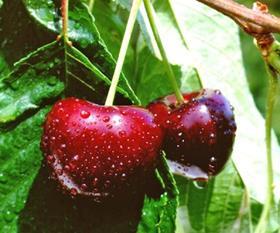
While early signs indicate Australian cherry producers should harvest a good crop this year, the country’s main export markets are looking a little more problematic.
On the back of two poor seasons, Australian growers will be quietly optimistic about the coming harvest. “Good winter rains and winter chill have set a good crop of cherries in most cherry growing regions across Australia,” independent consultant Ken Gaudion told Fruitnet.com. 'The timing of harvest may be a little variable, but most areas seem a little earlier, but close to normal.”
Self-fertile cultivars, such as Lapins, have set a good crop, while some the non-fertile cultivars have been more variable, he said. “This will result in producing some very high-quality and good size fruit.”
This will come as a welcome change to last season where production was down significantly owing to heavy rains that caused cherries to split and many growers to leave fruit on trees.“Rain also makes cherries softer, lowers sugars and the fruit is less likely to travel long distances or have long shelf lives,” Mr Gaudion said.
However, long-range weather forecasts for this season predict much less rain than in the previous. “For this growers will be thankful,” he added.
One of the worst affected areas last season was the Young district in New South Wales, which typically produces around 4,000 tonnes of fruit, said Cherry Growers Australia president Andrew Smith, adding that last season production there plummeted to around 500-600 tonnes.
In a typical year Australia harvests around 12,000 tonnes, he added, with about 20 per cent of this exported. Last year the crop fell to around 8,000 tonnes.
“All in all, if weather conditions continue to be favourable, a national crop of 15,000 to 17,000 tonnes is possible this year,” said Mr Gaudion.
However, exporters could face difficulties selling into foreign markets following a poor season last year where both quality and volume where down. The high Australian dollar will add to these difficulties.
“There’s no doubt Chile knocked the spots off us last year,'said David Minnis of 888 Exports.'They had a huge crop that was up 30 per cent on the previous year. The eating quality was quite good and because of the size of the crop the prices were very competitive,' he added.
“We’ve still got a legitimate place in the market, but we have to be careful what we ship and the varieties that we ship. We need to listen to the criticism coming from the market place. China’s main complaint has been that the fruit is too soft.”



